note Note générale
INTERCONNECTIONS /INTERCONNEXIONS | Final Event /Événement final
(Version française ci-dessous)
INTERCONNECTIONS was the final event of the interConnect initiative, a collaborative inquiry into digital transformation. Learn more in the box at the end of the text.
How can we foster a more interconnected digital transformation in the arts sector?
Recent digital projects allowed for experimentation in the arts sector and offered opportunities to rethink, develop, and innovate. It is now time for us to convene and understand where we have landed. This event explored leading “discussion areas” in the digital transformation of the arts sector.
In the spirit of collaboration, six interConnect participants from across so-called Canada shared key insights and reflections from their experiences and their engagement with interConnect’s co-learning groups. The event was recorded on February 22, 2024, and attended by more that 70 arts and cultural workers. The recording is in English with ASL interpretation, English and French captions are also available.
This note summarizes the conversations and provides links to relevant resources shared during the event. The discussion was hosted by interConnect Project Manager, Benjamin J. Allard. You can learn more about the panelists and interConnect at the end of the note.
All about Access to Culture (Discussion Area 1)
About Discussion Area 1
If we conceive of culture as art making and collaborating creatively across distances, disciplines, and lived experience, how is culture made? For whom is it created? How do connectivity, discoverability and other technological developments shape our cultural worlds?
Digital transformation in this area means things like: How to facilitate access to technology and foster collaboration? How can we use digital spaces to create an interconnected community? How can we encourage meaningful co-creation?
Amanda Penney and Christina Battle were the panelists for this discussion area.
The Conversation
Christina began by highlighting how access to artworks and community-building go hand-in-hand, with increased accessibility of works acting as a point of entry for collaborations and careful thought about how community-building takes place. She shared her community mesh network project, this mesh begins as a stolon, which features a profound sense of adaption and the creation of a distributed system that allows space for the people and things involved to shape the conversations and connections.
Amanda emphasized the importance of care in fostering welcoming spaces and described how her organization, Eastern Edge, adapted their programming during the COVID-19 pandemic. They began implementing access documents to help ensure that visiting artists and audiences feel comfortable and taken care of in their physical and virtual spaces. They used Matterport to 3D scan their gallery.
As the conversation opened up to all panelists, key ideas included reframing and reorienting ideas of pace in community-building and collaboration, with the acknowledgement that these endeavors take time. Rather than necessarily thinking of this as “slowing down”, panelists suggested that we think of it as moving with intentionality, thoughtfulness and care.
In the Chat
The Zoom chat was lively throughout the conversation, both in response to panelists’ ideas and to the prompt: share one thing you have learned from working with the Digital that can help in creating a more interconnected community.
Participants emphasized opportunities for community-building and connection with comments such as:
- Tech is a tool for people, not the other way around.
- Digital learning enables us to go way beyond our small community. The relationship between artist and 'audience' is so much closer with digital tools. We have the opportunity to interact and shape the artwork as collaborators in real time. This is also true locally, nationally and internationally, at a distance.
- Document-making that transcends time and space, it opens possibilities beyond the "physical" and the "tangible".
- We should remind ourselves to bring our artistic selves and sensibilities to technology by allowing ourselves to be constantly in process, rather than feeling pressured to deliver results on an arbitrary (funder) deadline.
- How are you, as an organization, receiving the input, manifesting, and communicating those adaptive changes?
Other resources shared in the chat:
- artseen.ca - Ted Lind (he/him) from ARTSPLACE invited you to check their new platform. They are seeking artist-run centres and museums/galleries that are interested in sharing in a mutual way.
A Digital Future For Us, By Us (Discussion Area 2)
About Discussion Area 2
How is the arts sector taking agency over its own digital future, and what opportunities are there for a more fair, diversified, and representative sector? How can we operate differently in terms of governance, sustainability, and public engagement? What initiatives currently exist?
Digital transformation in this area means things like: Who is developing innovative solutions and how can we know about them to avoid duplicating efforts? How do we keep community-based values and foster best-practices in project documentation? When should we collaborate widely and when is there value in creating something for a specific community?
Anju Singh and Heather Steinhagen were the panelists for this discussion area.
The Conversation
Anju discussed her experience as Project Manager working on CultureBrew.Art, “a digital platform that promotes and fosters intersectional interculturalism throughout the performing, literary, and media arts.” She spoke about the careful, intentional pacing that was required to honour the project’s needs. The team shifted their expectations of themselves by focusing on small, manageable goals and working iteratively rather than aiming to have a massive, complete solution. Anju emphasized how this approach can be useful for communicating with partners and maintaining interest and relevance, as it involves progressively adding features and being adaptive.
Heather shared the importance of continuously establishing key relationships and connections, discussing her work with the Canadian Crafts Federation. She talked about the project CitizensofCraft.ca, a movement, philosophy, and website aimed at facilitating connection and access to craft. Like Anju, she highlighted the need for an iterative approach to platform development, and she spoke of the necessity of keeping people in the loop as a project progresses.
Both Anju and Heather made connections between their own artistic practice and tech development in terms of skills and methods. This resonated strongly with other panelists as the conversation opened up. Ideas of process, iteration, practice and sustainability came to the forefront, and panelists emphasized the importance of shifting how the national arts sector operates to better provide space for these things.
In the Chat
The spirited Zoom chat participation continued throughout this conversation, both in response to panelists and in answering a survey that asked questions about participant experience with digital initiatives.
45 participants shared their experiences:
- 28 (62%) developed a digital initiative for the arts sector.
- 10 (22%) found a digital initiative that does the same thing as the one they developed.
- 30 (67%) used a digital initiative developed by an organization or an individual from the arts sector
- 10 (22%) have not understood the reason why a digital initiative in the arts sector was created.
- 20 (44%) had a digital initiative they loved become obsolete, discontinued or abandoned.
- 4 (9%) have never used a digital initiative developed by an organization or an individual from the arts sector.
Participants also shared frustrations around the perceived need to always create something new—a new platform, new service, new initiative etc.—in order to receive funding. They identified a need for a shift in the current system to better support continuing projects and their development and maintenance over time.
Navigating Uncertain Times (Discussion Area 3)
About Discussion Area 3
How do you plan strategically in times of uncertainty or rapid change? Does technology help or hinder us? How do we account for equity, diversity and inclusion? What have we learned that can help us chart a course for the future?
Which means, for digital transformation, things like: How can we prioritize a more accessible future? How can we invite collaboration and challenge competitive models? How can we benefit from emergent technologies?
Stephany Peterson and Danielle Hyde were the panelists for this discussion area.
The Conversation
Danielle proposed that we reclaim uncertainty and recognize its potential as a beautiful gift of change. She centered her discussion around the power of storytelling and the knowledge it can embody. She emphasized the need to position ourselves in the stories we tell and to be open to listening and receiving stories differently. Identifying the risk of flattening stories that can come with the standardization digital tools often involve, Danielle offered being in community, in relation, and building narratives together as opportunities for resilience.
Stephany drew attention to the tendency to want to reach for solutions in the urgency and pace with which we’re presented with problems. She argued that this rush for certainty reinforces the very systems we might want to call attention to and dismantle. Stephany advocated for the importance of space for uncertainty and vulnerability, and for sitting with the tension of the pace that the digital demands rather than trying to deliver on solutions.
Ideas of relationality and different ways of knowing and being were key to both Danielle and Stephany’s reflections. As the discussion opened up to all panelists, contradictions were identified between the inevitability of change and uncertainty in projects, on the one hand, and the perceived expectations of funders and developers on the other hand.
In the Chat
Again, the Zoom chat was very active throughout the conversation, with participants deeply engaging with the panelists’ ideas and also responding to the open prompt: What is one thing we should remember to infuse hope into the future of digital transformation in the arts sector?
Participants emphasized the importance of working together, valuing our human relationships, and learning from processes—including failure—sharing comments such as:
- There are so many opportunities for collaboration and learning from each other.
- Explore what accessibility really means.
- Remember that we bring our humanity to our work.
- People first, tech second; ensuring that technology is supporting our work, rather than us serving technology.
- Technology changes people, but people can also change technology!
- Prioritize incubator initiatives where trying and failing is valued; remember it's ok if your project fails. We are all experimenting and not everything needs to last.
- It’s okay to ask for ethical data security, sustainable environmental impact & diverse developers 🙌
- Transparency, “in real time”: the technology needs to act like a living thing not apart from us but expressing us.
- Though Canada is on Indigenous land, the language is always in English and French, how about honoring the Indigenous language and apply it?
- We also need digital funding that is for operating so we can keep working on what we are doing.
Open Question Period (All Discussion Areas)
Drawing on the live discussions and everything that was shared in the chat, Barbora Racevičiūtė posed three questions to the six panelists.
Climate and environment?
The first question asked panelists about their thoughts on climate and environment and how these things intersect with tech.
Danielle responded that the current pace of tech and work is unstable and out-of-touch. She argued that it is the role of artists to challenge that and forecast different futures to do work in the present.
Christina commented on how the conversation on climate change felt lost during the pandemic, and how although there is a lot of information out there, it isn’t always on our radar. She emphasized the need to incorporate thinking about carbon footprint in the work we do as artists and arts organizations, and shared some key resources:
- Considering the Carbon Footprint of the Online and
- the Synthetic Collective’s FIELDGUIDE.
- In the chat, Annette Hegel also shared The Commons from SCALE, a “one-stop hub for everything related to arts and climate change response”.
Conflict and turbulence?
The second question was one shared in the chat by Shawn Jordan: do you have wisdom on how to handle the conflict and turbulence inherent in the process?
Heather responded that conflict often arises from misunderstanding, and highlighted the centrality of identifying goals, understanding human needs, willingness to compromise and adapt, and supporting each other in the process of change.
Stephany replied that we often want to already have a shared common purpose, but that requires work, and we need to have space for that work to happen before attempting to come up with answers.
Anju argued that conflict is often an opportunity for growth and learning, and that avoiding conflict can be a missed opportunity as it might mean not bringing in voices that should be heard, or not putting ourselves in situations where there’s something we need to hear.
Danielle argued for love as a guiding principle, and for accepting that we might not get everything right the first time—that we might need to come back to the table a few times to build meaningful relationships.
How intimately they work with tech?
Barbora concluded with a more technical question from the audience, asking panelists how intimately they work with tech (coding, monitoring, etc.) and how much they purchase from a vendor or host.
Heather shared that her organization has worked with developers to build a website from the ground up in the past, but they are currently working with already existing tools. She noted that finding existing tools is practical in terms of costs and necessity. She also emphasized understanding your needs and values and being able to set expectations ahead of time with developers.
Anju (who trained as a software developer) spoke about technology life cycles and how there are times when it's important to do things for yourself and times when you need to bring someone else in to help. She commented that you might start one way and then things will shift—there are stages and iteration. She also noted the importance of showing up informed when dealing with developers.
Conclusion
The event concluded with host Benjamin J. Allard highlighting the interConnect resources that have been created and shared on Praxis. You can learn more about these by consulting our interConnect Project Overview note.
Closing Comments in the Chat
Participants expressed their appreciation for the event in the chat with comments such as:
- This conversation has been so nourishing! I’m inspired, instead of jaded, which so often happens in conversations which circle around tech. Thank you.
- I just wanted to say how amazed I am by the panelists here today! Thank you so much for generously sharing the fruit of your thoughts and experience, and above all for refocusing the discussion around the humans at the heart of it all!
- Thank you to the panelists and hosts for a wonderful conversation today! Looking forward to staying connected to IMMA and the other InterConnect participants :)
- I have to go but I need to say that this was a truly great and inspiring meeting! Huge thanks to the InterConnect team and especially Benjamin for creating the infrastructure for these conversations, which I sincerely hope will continue in the months ahead.
Credits
Panelist Bios
Christina Battle (she) - Christina Battle is an artist based in Treaty 6, (Edmonton, Alberta). Her practice focuses on thinking deeply about the concept of disaster: its complexity, and the intricacies that are entwined within it. Much of this work extends from her recent PhD dissertation (2020) which looked closer to community responses to disaster: the ways in which they take shape, and especially to how online models might help to frame and strengthen such response. [www.cbattle.com]
Danielle Hyde (they, she) - Danielle Hyde is a multi-disciplinary Indigenous artist and educator with a disability. Their work is diverse, weaving multiple mediums and materiality. Anchoring this work is their artistic practice that centers generosity and care throughout the creation process. Danielle’s approach sees all creation as collaborative. In honoring ethical relationality we do justice by the stories told with Art. Art is alive and in conversation with many actors operating in a creative chorus; seen, unseen, human and beyond human. Danielle works to restore Art’s fundamental generosity and reclaim it from colonial narratives to promote Indigenous place-making, wellness and humanizing mental health.
Amanda Penney (she) - Amanda Joan Penney is a mother, visual artist and arts administrator. Bookbinding, printmaking and photography have been the most technically developed areas of her art practice. Amanda is currently managing a family of four along with Eastern Edge artist-run centre in St. John's, Newfoundland & Labrador. The connection between art and community and the healing power of both is what motivates her work at an artist-run centre. Amanda is a big fan of street art and public art spaces and is driven to experience and create art whenever she can.
Stephany Peterson (she) - Stephany’s heart beats for complexity. She is captivated by the movement of knowledge as a process and stewarding how relevant expertise of lived and learned experience navigate uncertainty, cohesion and conflict to tackle the most pressing problems we face as a global society that cannot be addressed from one perspective. She sinks her teeth into anything that meets the condition of complexity emerging from systems capable of it. Her contributions have placed her in research, teaching, and service leadership positions on government, academic, and not for profit boards, think tanks, fellowships, and cohorts across 50 countries to embody her praxis approach: so what we know becomes what we do.
Anju Singh (she) - Anju Singh is a composer, multidisciplinary artist, and musician who also works in the arts sector as a technology consultant and cultural worker. Anju has produced and consulted on the development of several arts-based and non-arts based digital platforms for almost a decade. Anju's passion in technology builds for arts purposes is in the areas of user experience, accessibility, privacy, security, and sustainable technology solutions.
Heather Steinhagen (she) - Heather Steinhagen is an artist of sorts, homegrown and based in Whitehorse, Yukon. She works part-time for the Canadian Crafts Federation as the Director of Operations and Digital Strategist while maintaining a busy artistic practice as an intuitive, painter and fine toy maker. Heather is curious about soulful connections and demystifying technology for artists and non-profits.
IMAA and interConnect Team
Host - Benjamin J. Allard, Project Manager (interConnect)
Question master - Barbora Racevičiūtė, National Director (IMAA)
Tech Support - Yuko Fedrau, Operations Coordinator (IMAA)
Chat wizard - Pascaline Le Bras, Communication Specialist (interConnect)
Note taker - Samuel Thulin, Knowledge Connector (interConnect)
General helper - Marilyne Parent, Communications and Membership Manager (IMAA)
Interpretation and Accessibility
English to French — Fannie Poirier and Gene Morrow (Coop l’Argot, traduction et services langagiers)
American Sign Language (ASL) — Alexandria Skrzyniak and Amanda Hyde (Toronto Sign Language Interpreter Service)
Captions - Studio Sonogram
About this note
- This note and event was nurtured by the discussions that took place during interConnect workshops.
- Note authored and translated by the interConnect team.
interConnect was an initiative led by the Independent Media Arts Alliance (IMAA). The views expressed in this note and event, however, are those of the participants and not official IMAA recommendations.
//////////////////////////////////////////////////
(Version française)
INTERCONNEXIONS était l’évènement final de l’initiative interConnect, une enquête collaborative sur la transformation numérique. Apprenez-en davantage dans l’encadré à la fin du texte.
Comment pouvons-nous favoriser une transformation numérique plus interconnectée dans le secteur artistique?
Les projets numériques récents ont permis au secteur des arts d'expérimenter et ont offert des possibilités pour repenser, développer et innover. Il est maintenant temps de nous réunir pour découvrir où nous en sommes arrivées. Cet événement a exploré des « champs de réflexion » inspirants pour la transformation numérique dans le secteur des arts.
Dans un esprit de collaboration, six participantes d’interConnect à travers le territoire appelé Canada ont partagé des idées porteuses inspirées de leurs parcours et de leur engagement avec les groupes d’apprentissage collaboratif d’interConnect. L'événement a été enregistré le 22 février 2024 et plus de 70 travailleurs du secteur des arts et de la culture y ont participé. L'enregistrement est en anglais avec interprétation ASL. Des sous-titres en anglais et en français sont également disponibles.
Cette note résume les conversations et fournit des liens vers des ressources pertinentes partagées au cours de l'événement. La discussion a été animée par Benjamin J. Allard, chargé de projet pour interConnect. Vous pouvez en savoir plus sur les panélistes et sur interConnect à la fin de la note.
Tout savoir sur l'accès à la culture (Champ de réflexion 1)
À propos du Champ de réflexion 1
Si nous concevons la culture comme la création artistique et la collaboration créative au-delà des distances, des pratiques et de l'expérience vécue, comment la culture est-elle créée? Pour qui est-elle créée? Comment la connectivité, la découvrabilité et d'autres développements technologiques façonnent-ils nos mondes culturels?
Dans ce champ de réflexion, la transformation numérique signifie des choses comme : Comment faciliter l'accès à la technologie et encourager la collaboration? Comment utiliser les espaces numériques pour créer une communauté interconnectée? Comment encourager une création collaborative pertinente?
Amanda Penney et Christina Battle étaient les panélistes de ce champ de réflexion.
La conversation
Christina commença par souligner que l’accès aux œuvres d'art et le renforcement des communautés fonctionnent ensemble, une plus grande accessibilité aux œuvres peut agir comme un point d'entrée pour les collaborations et invite à la réflexion sur les moyens à mettre en place pour favoriser le développement communautaire. Elle présenta son projet communautaire de réseau maillé (mesh network), this mesh begins as a stolon, qui a créé avec une grande capacité d’adaptation un système distribué permettant aux personnes et aux choses impliquées d’avoir un impact sur la manière dont les conversations et les connexions étaient formées.
Amanda souligna l'importance de l’éthique du soin pour la création d’espaces accueillants et a décrit comment son organisation, Eastern Edge, a adapté sa programmation pendant la pandémie de COVID-19. Ils ont commencé à mettre en place des documents d'accès pour s'assurer que les artistes et le public en visite soient à l'aise et accompagnés autant dans leurs espaces physiques que virtuels. Ils ont d’ailleurs utilisé Matterport pour numériser en 3D leur espace galerie.
La conversation avec tous les panélistes a notamment porté sur l’importance de repenser et de recarder nos conceptions de cadence de travail quand nous réalisons des projets de développement et de collaboration communautaires, en reconnaissant que ces efforts prennent du temps. Plutôt que de voir un « ralentissement », les panélistes suggèrent plutôt de considérer cela comme un cheminement avec intentionnalité, réflexions et attention.
Dans le clavardage
Le clavardage de la rencontre Zoom était animé tout au long de la conversation, aussi bien en réponse aux idées des panélistes qu'à la question suivante : partagez une chose que vous avez apprise en travaillant avec le numérique qui peut aider à créer une communauté plus interconnectée.
Les participant·e·s ont surtout mis l'accent sur les possibilités de créer des communautés et des liens, avec des commentaires tels que :
- La technologie est un outil pour les gens, et non l'inverse.
- L'apprentissage numérique nous permet d'aller bien au-delà de notre petite communauté. La relation entre l'artiste et le « public » est bien plus proche avec des outils numériques. Nous avons la possibilité d'interagir et de façonner le travail artistique comme collaborateurs en temps réel. Cela est également vrai au niveau local, national et international, à distance.
- La création de documents transcende le temps et l'espace, elle ouvre des possibilités au-delà du « physique » et du « tangible ».
- Nous devrions nous rappeler d'apporter notre personnalité et notre sensibilité artistiques à la technologie en nous autorisant à être constamment dans un processus, plutôt que de nous sentir obligés de fournir des résultats dans un délai arbitraire (pour les bailleurs de fonds).
- Comment, en tant qu'organisation, recevez-vous les données, manifestez-vous et communiquez-vous ces changements adaptables?
Autres ressources partagées dans le clavardage :
- artseen.ca - Ted Lind (il/lui) d'ARTSPLACE vous invite à consulter leur nouvelle plateforme. Ils recherchent des centres d'artistes autogérés et des musées/galeries qui sont intéressés par un partage mutuel.
Un avenir numérique pour nous, par nous (Champ de réflexion 2)
À propos du Champ de réflexion 2
Comment le secteur artistique prend-il en main son avenir numérique et quelles opportunités s’offrent à nous pour créer un secteur plus équitable, plus diversifié et plus représentatif? Comment pouvons-nous repenser nos modes de gouvernance, notre durabilité et la participation de nos publics? Quelles initiatives existent déjà?
Dans ce champ, la transformation numérique signifie des choses comme : Qui développe des solutions innovantes et comment pouvons-nous en être informés pour éviter de dupliquer les efforts? Comment conserver les valeurs communautaires et favoriser les meilleures pratiques dans la documentation de projets? Quand devons-nous collaborer largement et quand y a-t-il lieu de créer quelque chose pour une communauté spécifique?
Anju Singh et Heather Steinhagen étaient les panélistes de ce champ de réflexion.
La conversation
Anju discuta de son expérience en tant que responsable de projet pour CultureBrew.Art, « une plateforme numérique qui fait la promotion et encourage l'interculturalisme intersectionnel dans les arts de la scène, la littérature et les arts médiatiques ». Elle parla du rythme prudent et intentionnel nécessaire pour répondre aux besoins du projet. L'équipe modifia leurs attentes et se concentra sur des objectifs simples et réalisables et en travaillant de manière itérative plutôt qu'en cherchant à obtenir une solution majeure et complète. Anju a souligné que cette approche peut être utile pour communiquer avec les partenaires et maintenir l'intérêt et la cohérence, car elle implique d'ajouter des fonctionnalités progressivement et de s'adapter.
Heather partagea l'importance d'établir en permanence des relations et des connexions clés, en discutant de son travail avec la Fédération canadienne des métiers d'art. Elle parla du projet CitizensofCraft.ca, un mouvement, une philosophie et un site web visant à faciliter la connexion et l'accès aux métiers d'art. Comme Anju, elle souligna la nécessité d'une approche itérative pour le développement d'une plateforme, et elle parla de l’importance de garder les gens informés au fur et à mesure qu'un projet évolue.
Anju et Heather établirent toutes deux des liens entre leur propre pratique artistique et le développement technologique en termes de compétences et de méthodes. Ceci résonna fortement avec les autres panélistes tandis que la conversation s'ouvrait. Les idées de processus, d'itération, de pratique et de durabilité ont été mises en avant, et les panélistes soulignèrent l'importance de changer le mode de fonctionnement du secteur national des arts afin de mieux laisser la place à ces idées.
Dans le clavardage
La participation animée dans le clavardage de Zoom s'est poursuivie tout au long de cette conversation, à la fois en réponse aux panélistes et en réponse à un sondage sur l'expérience des personnes participantes en matière d'initiatives numériques.
45 personnes ont partagé leur expérience :
- 28 (62%) personnes avaient développé une initiative numérique pour le secteur artistique.
- 10 (22%) personnes avaient trouvé une initiative numérique qui fait la même chose que la leur.
- 30 (67%) personnes avaient déjà utilisé une initiative numérique développée par une organisation ou un individu du secteur artistique.
- 10 (22%) personnes n’avaient déjà pas compris la raison pour laquelle une organisation avait créé une initiative numérique.
- 20 (44%) personnes avaient vu une initiative numérique qu’elles aimaient devenir obsolète, discontinue ou abandonnée.
- 4 (9%) personnes n’avaient jamais utilisé une initiative numérique développée par le secteur artistique.
Les personnes participantes ont également fait part de leurs frustrations face à la nécessité perçue de toujours créer quelque chose de nouveau - une nouvelle plateforme, un nouveau service, une nouvelle initiative, etc. Elles ont souligné la nécessité de modifier le système actuel afin de mieux soutenir les projets en continu ainsi que leur développement et leur maintenance au fil du temps.
Naviguer en période d'incertitude (Champ de réflexion 3)
À propos du Champ de réflexion 3
Comment planifier stratégiquement en période d'incertitude ou de changement rapide? La technologie nous aide-t-elle ou est-elle un obstacle? Comment tenir compte de l'équité, de la diversité et de l'inclusion? Quels apprentissages peuvent nous aider à tracer la voie de l'avenir?
Dans ce champ, la transformation numérique signifie des choses comme : Comment pouvons-nous donner la priorité à un avenir plus accessible? Comment inviter à la collaboration et remettre en question les modèles concurrentiels? Comment bénéficier des technologies émergentes?
Stephany Peterson et Danielle Hyde étaient les panélistes de ce champ de réflexion.
La conversation
Danielle proposa de se réapproprier les incertitudes; elles peuvent être de magnifiques cadeaux qui apportent le changement. Elle a parlé du pouvoir des histoires et de la connaissance qu’elles peuvent incarner. Elle insista sur le fait que nous devons nous inclure et prendre position dans les histoires que nous racontons et que nous devons être ouverts à écouter et à recevoir des récits différents. En identifiant le risque que les récits se figent avec la standardisation que demandent les outils numériques, Danielle nous invite à considérer qu'être en communauté, en relation, et que construire des récits ensemble sont des occasions de résilience.
Stephany a souligné la tendance à vouloir trouver des solutions dans l'urgence et au rythme où les problèmes se présentent à nous. Elle affirma que cette course à la certitude renforce les systèmes sur lesquels nous pourrions vouloir porter notre attention et que nous pourrions vouloir démanteler. Stephany plaida en faveur de l'importance de laisser de l'espace pour l'incertitude et la vulnérabilité, et de prendre un moment d’arrêt pour bien réfléchir aux enjeux entrainés par la cadence que le numérique exigence plutôt que d'essayer de fournir des solutions.
Des idées de relationnalité et différentes façons d’être et de savoir ont été au cœur des réflexions de Danielle et de Stephany. Lorsque la discussion s’est ouverte à tous les panélistes, des contradictions furent identifiées entre, d’une part, l'inévitabilité du changement et de l'incertitude dans les projets, et, d'autre part, les attentes perçues des bailleurs de fonds et des développeurs.
Dans le clavardage
À nouveau, le clavardage Zoom fut très actif durant toute la conversation, les participant·e·s ont été engagé·e·s par les idées des panélistes et ont répondu à la question ouverte : Quelle est la chose à retenir afin que la transformation numérique dans le secteur artistique soit porteuse d'espoir?
Les participant·e·s soulignèrent l'importance de travailler ensemble, de valoriser nos relations humaines et d'apprendre à partir des processus, y compris des échecs, en partageant des commentaires tels que :
- Il y a tellement de possibilités de collaboration et d'apprentissage mutuel.
- Explorez ce que signifie réellement l'accessibilité.
- Rappelez-vous que nous apportons notre humanité à notre travail.
- Les personnes d'abord, la technologie après; veillez à ce que la technologie soutienne notre travail, et non que nous soyons au service de la technologie.
- La technologie change les gens, mais les gens peuvent aussi changer la technologie!
- Donnez la priorité aux initiatives d'incubation où l'essai et l'échec sont valorisés; rappelez-vous que ce n'est pas grave si votre projet échoue. Nous sommes tous en train d'expérimenter et tout n'a pas besoin de durer.
- C'est normal de demander une sécurité des données éthique, un impact environnemental durable et des développeurs diversifiés 🙌
- De la transparence, « en temps réel » : la technologie doit se comporter comme un être vivant, qui n'est pas séparé de nous, mais qui nous reflète.
- Bien que le Canada soit situé sur des terres autochtones, la langue est toujours l'anglais et le français; pourquoi ne pas honorer la langue autochtone et la mettre en pratique?
- Nous avons également besoin d'un financement numérique destiné au fonctionnement afin de pouvoir continuer à travailler sur ce que nous faisons.
Période de questions ouvertes (tous les champs de discussion)
S'inspirant des discussions en cours pendant la rencontre et de tout ce qui a été partagé dans le clavardage, Barbora Racevičiūtė posa trois questions aux six panélistes.
Climat et environnement?
La première question demandait aux panélistes ce qu'ils pensaient du climat et de l'environnement et comment ces éléments sont reliés à la technologie.
Danielle répondit que le rythme actuel de la technologie et du travail est instable et n’est pas connecté avec la réalité. Elle affirma que c'est aux artistes de défier cela et de prévoir des avenirs différents pour travailler dans le présent.
Christina commenta le fait que la conversation sur le changement climatique se soit perdue pendant la pandémie, et que bien qu'il y ait beaucoup de données disponibles, ce n'est pas toujours pris en compte. Elle insista sur la nécessité d'intégrer la question de l'empreinte carbone dans le travail que nous faisons en tant qu'artistes et organisations artistiques, et partagea quelques ressources à ce sujet :
- Considering the Carbon Footprint of the Online (en anglais uniquement) et
- le Synthetic Collective’s FIELDGUIDE (en anglais uniquement).
- Dans le clavardage, Annette Hegel partagea aussi The Commons from SCALE (en anglais uniquement), un « guichet unique pour tout ce qui concerne les arts et la réponse au changement climatique ».
Conflit et tension?
La deuxième question a été posée par Shawn Jordan dans le clavardage : avez-vous des conseils sur la manière de gérer les conflits et les tensions inhérents au genre de processus dont vous parlez?
Heather répondit que les conflits sont souvent le résultat d'un malentendu et souligna la nécessité d'identifier les objectifs, de comprendre les besoins humains, d'être prêt à faire des compromis et à s'adapter, et de se soutenir les uns les autres dans le processus de changement.
Stephany répondit que nous voulons souvent avoir déjà un objectif commun partagé, mais cela demande du travail, et nous devons avoir l'espace nécessaire pour que ce travail se fasse avant d'essayer de fournir des réponses.
Anju affirma que le conflit est souvent une opportunité de croissance personnelle et d’apprentissage. Éviter le conflit peut être une occasion manquée, nous pourrions oublier d’inclure des voix qui devraient être entendues ou ne pas nous mettre dans des situations où quelque chose doit être soulevé.
Danielle plaida en faveur de l'amour comme principe directeur et pour l'acceptation du fait que nous ne réussirons peut-être pas tout du premier coup - que nous devrons peut-être revenir à la table plusieurs fois pour construire des relations enrichissantes.
À quel point travaillez-vous directement avec la technologie?
Barbora conclut avec une question plus technique posée par le public, à quel point travaillez-vous directement avec la technologie (codage, contrôle, etc.) et devez-vous engager des fournisseur·euse·s de services ou d’hébergement?
Heather indiqua que son organisation avait déjà travaillé avec des développeur·euse·s pour créer un site internet à partir de rien, mais qu'elle travaillait actuellement avec des outils déjà existants. Elle a souligné que trouver des outils existants peut être pratique au niveau des coûts et de certains besoins. Elle a également insisté sur la nécessité de comprendre ses besoins et ses valeurs et d'être capable de définir à l'avance ses attentes avec les développeur·euse·s.
Anju (qui a suivi une formation en développement de logiciels) parla des cycles de vie des technologies et du fait que parfois il est important de faire les choses soi-même et, d'autres fois, il faut faire appel à quelqu'un d'autre pour nous aider. Elle a souligné que nous pouvons commencer d'une certaine façon et que les choses peuvent changer par la ensuite - il y a des étapes et des itérations. Elle souligna également l'importance de se montrer informé·e lorsqu'on a affaire à des développeurs·euses.
Conclusion
L'événement s'est terminé par l'intervention de Benjamin J. Allard qui a présenté les ressources d’interConnect créées et partagées sur Praxis. Vous pouvez en savoir plus sur ces ressources en consultant notre note interConnect | Aperçu du projet.
Clôture de la session dans le clavardage
Les participants exprimèrent leur appréciation de l'événement dans le clavardage avec des commentaires tels que :
- Cette conversation a été très enrichissante! Je suis inspiré.e, au lieu d'être blasé.e, ce qui arrive si souvent dans les conversations qui tournent autour de la technologie. Je vous remercie.
- Je voulais simplement vous dire à quel point je suis émerveillé.e par les panélistes présentes aujourd'hui! Merci beaucoup de partager généreusement le fruit de vos réflexions et de votre expérience, et surtout de recentrer la discussion sur les êtres humains qui sont au cœur de tout cela!
- Merci aux panélistes et aux animateurs pour la merveilleuse conversation d'aujourd'hui! J'ai hâte de rester en contact avec l'AAMI et les autres participant.e.s d'interConnect :)
- Je dois partir, mais je tiens à dire que cette réunion a été vraiment formidable et inspirante! Un grand merci à l'équipe d'interConnect et en particulier à Benjamin pour avoir créé l'infrastructure nécessaire à ces conversations qui, je l'espère sincèrement, se poursuivront dans les mois à venir.
À propos de l’événement
Biographie des panélistes
Christina Battle (elle) - Christina Battle est une artiste basée au Traité 6, (Edmonton, Alberta). Sa pratique est axée sur une réflexion approfondie sur le concept de catastrophe : ses complexités et les subtilités qui s'y rattachent. Une grande partie de ce travail découle de sa récente thèse de doctorat (2020), qui s'est intéressée de plus près aux réponses des communautés face aux catastrophes : la manière dont elles prennent forme, et en particulier la manière dont les modèles en ligne peuvent contribuer à encadrer et à renforcer ces réponses. [www.cbattle.com]
Danielle Hyde (iel, elle) - Danielle Hyde est une personne artistique autochtone multidisciplinaire et une éducatrice handicapée. Leur travail est varié, tissant de multiples médiums et matérialités. Ce travail est ancré dans leur pratique artistique qui met l'accent sur la générosité et l'attention tout au long du processus de création. L'approche de Danielle considère toute création comme une collaboration. En honorant la relation éthique, nous rendons justice aux histoires racontées par l'art. L'art est vivant et en conversation avec de nombreux acteurs qui opèrent dans un ensemble créatif ; visibles, invisibles, humains et au-delà de l'humain. Danielle travaille à restaurer la générosité fondamentale de l'art et à le libérer des récits coloniaux pour promouvoir la création de milieux autochtones, le bien-être et l'humanisation de la santé mentale.
Amanda Penney (elle) - Amanda Joan Penney est mère, artiste visuelle et travailleuse culturelle. La reliure, la gravure et la photographie sont les domaines les plus développés techniquement de sa pratique artistique. Amanda se consacre actuellement à la gestion d'une famille de quatre et du centre d'art autogéré Eastern Edge à St. John's, Terre-Neuve-et-Labrador. Le lien entre l'art et la communauté ainsi que le pouvoir de guérison des deux est ce qui motive son travail dans un centre d'art autogéré. Amanda est une grande fan de street art et d'art public, et elle souhaite vivre et créer de l'art aussi souvent que possible.
Stephany Peterson (elle) - Le cœur de Stephany bat pour la complexité. Elle est captivée par le mouvement de la connaissance en tant que processus et par la façon dont l'expérience vécue et apprise est pertinente pour naviguer dans l'incertitude, la cohésion et le conflit, pour s'attaquer aux problèmes les plus urgents auxquels nous sommes confrontés en tant que société mondiale et qui ne peuvent être abordés d'un seul point de vue. Elle est passionnée par tous types de complexité émergente de systèmes. Ses contributions l'ont amenée à occuper des postes de recherche, d'enseignement et de services conseils au sein de gouvernements, d’universités, d’organismes à but non lucratif, de think tank et d’autres groupes de recherche à travers 50 pays, afin d'incarner son approche à la praxis : ce que nous savons devient ce que nous faisons.
Anju Singh (elle) - Anju Singh est une compositrice, une artiste multidisciplinaire et une musicienne qui travaille également dans le secteur artistique en tant que consultante en technologie et travailleuse culturelle. Depuis près de dix ans, Anju produit et conseille le développement de plusieurs plateformes numériques artistiques et non artistiques. La passion d'Anju pour la construction de technologies à des fins artistiques porte sur les domaines de l'expérience utilisateur, de l'accessibilité, de la confidentialité, de la sécurité et des solutions technologiques durables.
Heather Steinhagen (elle) - Heather Steinhagen est en quelque sorte une artiste, née et basée à Whitehorse, au Yukon. Elle travaille à temps partiel pour la Fédération canadienne des métiers d'art au poste de directrice des opérations et stratège numérique, tout en maintenant une pratique artistique bien remplie comme peintre intuitive et fabricante de jouets raffinés. Heather est curieuse d'établir des relations profondes et de démystifier la technologie pour les artistes et les organismes à but non lucratif.
L'équipe AAMI et interConnect
Animateur - Benjamin J. Allard, Chargé de projet (interConnect)
Maître des questions - Barbora Racevičiūtė, Directrice nationale (IMAA)
Support technique - Yuko Fedrau, Coordinatrice des opérations (IMAA)
Chat wizard - Pascaline Le Bras, Spécialiste des communications (interConnect)
Preneur de notes - Samuel Thulin, Connecteur de connaissances (interConnect)
Aide générale - Marilyne Parent, Responsable de la communication et des adhésions (IMAA)
Interpretation et accessibilité
De l'anglais au français pendant la rencontre - Fannie Poirier et Gene Morrow (Coop l'Argot, traduction et services langagiers)
Langue des signes américaine (ASL) - Alexandria Skrzyniak et Amanda Hyde (Toronto Sign Language Interpreter Service)
Sous-titrage - Studio Sonogram
À propos de cette note
- Cette note a été inspirée par les discussions qui ont eu lieu au cours des ateliers d’interConnect.
- Note écrite et traduite par l’équipe d’interConnect.
L'initiative interConnect a été menée par l'Alliance des arts médiatiques indépendants (AAMI). Les opinions exprimées dans cette note sont celles des auteur·trice·s et ne constituent pas des recommandations officielles de l'AAMI.
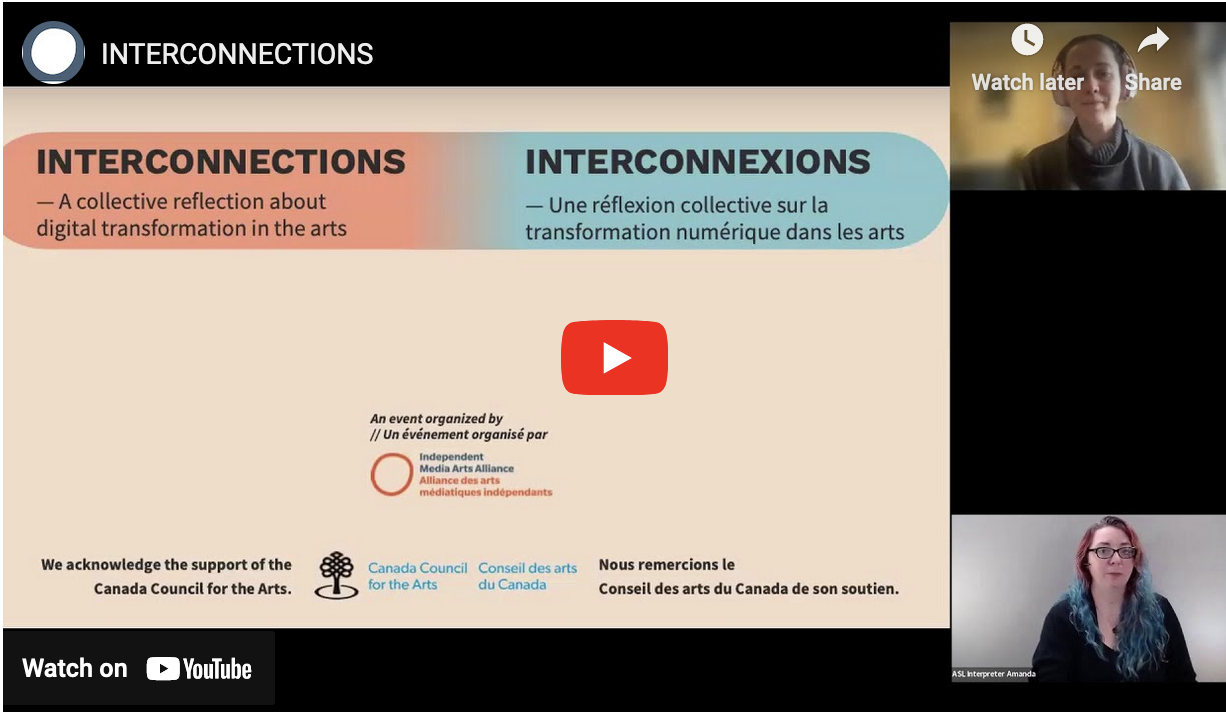
note Note(s) liée(s)
 22 mars 2024
22 mars 2024
Creating Safe and Welcoming Community Spaces with Access Documents...
22 mars 2024 19 mars 2024
19 mars 2024
Introduction to Creating Welcoming Community Spaces /Introduction à...
19 mars 2024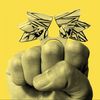 13 février 2024
13 février 2024
CitizensofCraft.ca
13 février 2024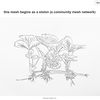 18 octobre 2023
18 octobre 2023
this mesh begins as a stolon (a community mesh network)
18 octobre 2023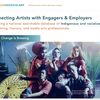 5 juillet 2023
5 juillet 2023
CultureBrew.Art - A searchable database of Indigenous and...
5 juillet 2023 11 mai 2023
11 mai 2023
interConnect | Discussion Areas/Champs de réflexion
11 mai 2023 12 mai 2023
12 mai 2023
interConnect | Co-Learning groups/Groupes d’apprentissage collaboratif
12 mai 2023 28 mars 2023
28 mars 2023
interConnect | Project Overview/Aperçu du projet
28 mars 2023diversity_3Organisation(s) reliée(s)
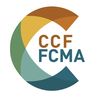 24 août 2023
24 août 2023
Canadian Crafts Federation / Fédération canadienne des métiers d'art
24 août 2023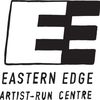 31 août 2023
31 août 2023
Eastern Edge
31 août 2023bookmark Terme(s) relié(s)
 11 mai 2023
11 mai 2023
digital transformation
11 mai 2023 21 mars 2024
21 mars 2024
Mesh network / Réseau maillé
21 mars 2024Carnet(s) relié(s)
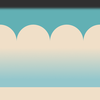 file_copy
25 notes
file_copy
25 notes
Welcome to interConnect! Bienvenue à interConnect!
file_copy 25 notesAuteur·trice(s) de note
Contacter les auteur·trice(s)Communauté liée
interConnect
Plus d’informationsPublication
5 mars 2024
Modification
29 mars 2024 14:23
Visibilité
public



